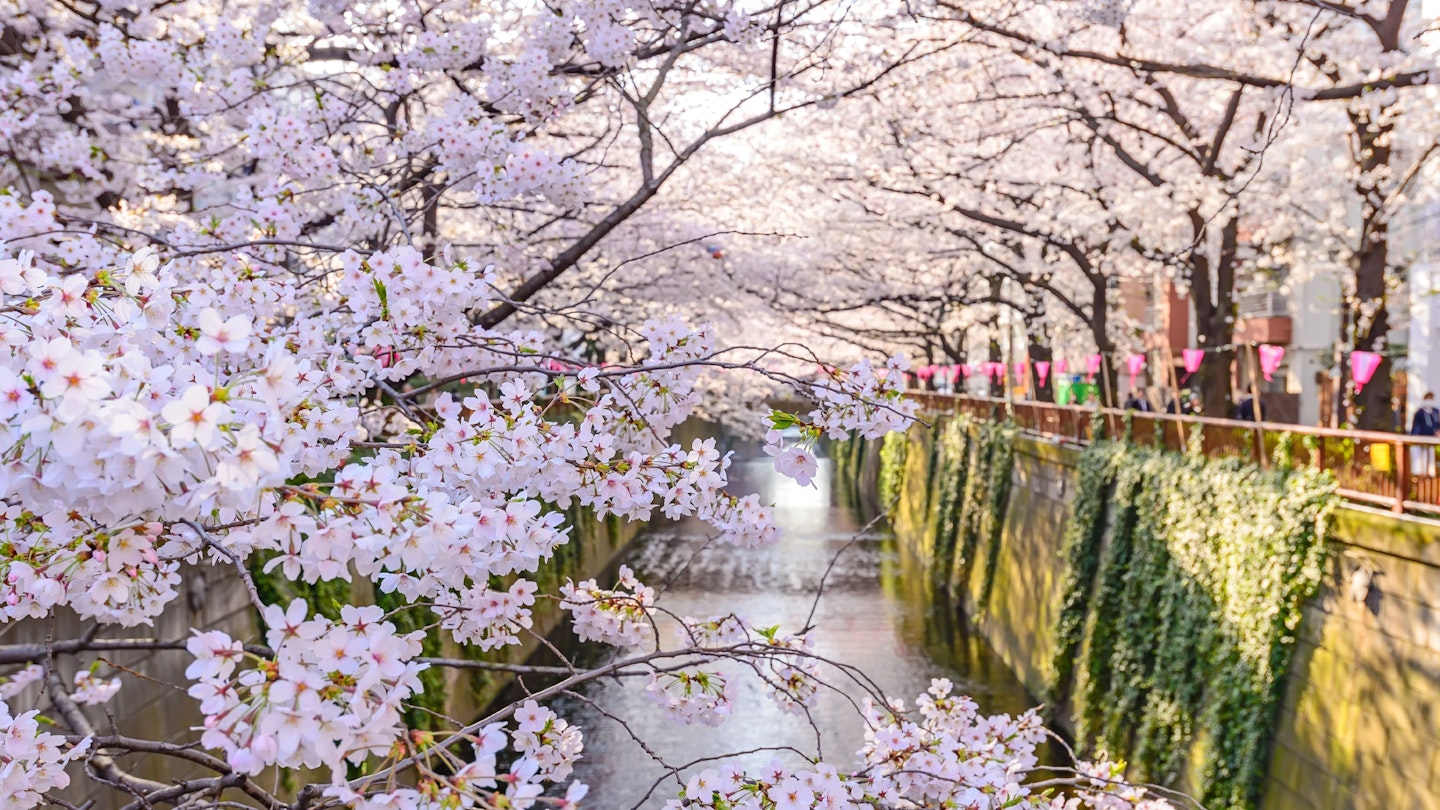Spring in Tokyo: Cherry Blossoms and Seasonal Delights
Spring in Japan means sakura (cherry) blossoms. This seasonal beauty is one of the many compelling reasons to visit Tokyo during this time of year. Additionally, you can experience traditional festivals, sumo wrestling, and a variety of seasonal delicacies blooming across the city’s parks and gardens.
Accommodation Tips
Bear in mind that spring is the most popular time to visit Japan. It is advisable to secure your accommodation well in advance. Be especially aware of the series of national holidays known as Golden Week, which is a peak travel period for the Japanese populace and can significantly increase hotel rates. In 2019, Golden Week will occur from April 27 to May 6, inclusive of a special national holiday called ‘Coronation Day’ on May 1, celebrating Crown Prince Naruhito’s ascension as Japan’s new emperor.
See the Cherry Blossoms, of Course!
As spring arrives, large sections of Tokyo transform from grey to blush pink as the cherry blossoms come into full bloom. Iconic parks like Yoyogi-kōen and Ueno-kōen are renowned for their sake-drenched cherry-blossom-viewing parties known as hanami. Waterside promenades, including the one along Naka-Meguro’s canal, Meguro-gawa, and the one across from the Imperial Palace’s moat, Chidori-ga-fuchi, are adorned with blooming canopies.
The sakura season typically begins in late March or early April, providing a joyful reason for the city to embrace life in the moment. This centuries-old tradition, derived from the fleeting beauty of the blossoms, only lasts for about two weeks. However, a variety of sakura-themed treats, available at convenience stores and cafes, keep the spirit alive much longer.
In 2019, the Japan Meteorological Corporation predicted that the cherries would bloom in the last week of March. To stay updated on the blossoms throughout Japan, consider downloading the entertaining Sakura Navi app available on iOS and Android.
And See Other Blooms as Well
While cherry blossoms steal the spotlight, spring brings a delightful array of additional blooms. From mid-April to early June, when the rainy season sets in, Tokyo typically enjoys warmer and sunnier weather than during the sakura phase.
Shortly after the final cherry blossoms fall, vibrant azalea (tsutsuji) flowers emerge around the city. If your visit coincides with spring (from the second week of April through the first week of May), you’ll be amazed at the extent of Tokyo’s azalea-filled landscapes. The Nezu-jinja shrine, famous for its extensive azalea garden, boasts around 3000 shrubs covering over a hundred varieties.
Late April brings the lovely lavender blooms of wisteria (fuji-no-hana). For captivating views, visit Kameido Tenjin, a serene shrine featuring iconic red arched bridges adorned with drooping flowers. Additionally, Koishikawa Kōrakuen has a small area dedicated to wisteria trellises, known mainly for its plum blossoms and stunning fall foliage.
By mid-June, as the rainy season approaches, irises become prominent. Once the favorite flower of Empress Shoken, they can be seen in abundance at Meiji-jingū Gyoen, the charming garden that accompanies Meiji-jingū. In June, visitors can also enjoy hydrangeas (ajisai), which are a favorite among Tokyo’s urban gardeners.
Catch a Traditional Festival
May marks the beginning of the matsuri (festival) season, when shrines parade their kami (gods) through neighborhoods using mikoshi – ornately decorated portable shrines. These events date back to the founding years of Tokyo in the 1600s, with colorful participants wearing happi jackets, hachimaki bandanas, and, for men, fundoshi loincloths.
The Kanda Matsuri, held in mid-May by Kanda Myōjin, is a significant event on odd-numbered years (in 2019: May 11 & 12). Saturday features a procession through central Tokyo, followed by a parade of mikoshi on Sunday. The Sanja Matsuri at Asakusa-jinja is the largest matsuri event, expected to draw over a million spectators. This vibrant festival occurs on the third weekend in May (in 2019: May 18 & 19).
Or a Festival That’s Just a Little Bit Naughty
Consider a detour to Kawasaki, located just south of Tokyo, for the annual Kanamara Matsuri, widely known as the penis festival. Here, locals parade mikoshi, some adorned with giant phalluses. This lively event features participants donning drag or festive attire, with various suggestive snacks available for purchase. Don’t overlook the fun of watching locals carve radishes into suggestive shapes.
The celebration at the Kanayama-jinja shrine takes place on the first Sunday of April (April 7 in 2019), a site historically known for prayers for happy marriages and healthy pregnancies, as well as protection from sexually transmitted diseases.
See Sumo Wrestlers in the Ring… and Holding Babies
Mid-May hosts the second of Tokyo’s three annual grand sumo tournaments, scheduled from May 12 to 26 in 2019 at the national sumo stadium, Ryōgoku Kokugikan. In late April (April 28 in 2019), Asakusa will host its annual Naki-zumo event at Sensō-ji, which pairs sumo wrestlers and infants in an entertaining cry-off. Wrestlers put on amusing faces to coax babies into crying, based on the belief that a crying baby will grow into a healthy adult. Occasionally, the infants are dressed as little sumo wrestlers.
Taste Spring Specialties
Japanese cuisine is renowned for its exceptional seasonal variations. While it’s possible to find a multitude of ingredients year-round, the spring harvest is particularly exciting after months of hearty winter fare. The season kicks off with menus featuring takenoko (bamboo shoots), often enjoyed in a rice dish known as takikomi gohan. Mountain vegetables, collectively referred to as sansai, emerging in spring include fukinoto (butterbur buds) and warabi (fiddlehead fern), which are particularly delicious when prepared as tempura.
Spring also brings an abundance of ingredients such as asparagus, spring onions, nanohana (rapeseed), and mizuna (young mustard greens) available in supermarkets and local farmers’ markets, like the Farmer’s Market @UNU. In June, cherries begin to bear fruit; while not from Tokyo’s ornamental trees, the orchards up north produce the renowned sato-nishiki. These gems are small, with a bright vermilion hue reminiscent of a shrine’s torii gate, featuring a sweet and tart flavor balance.
First published in January 2015.





